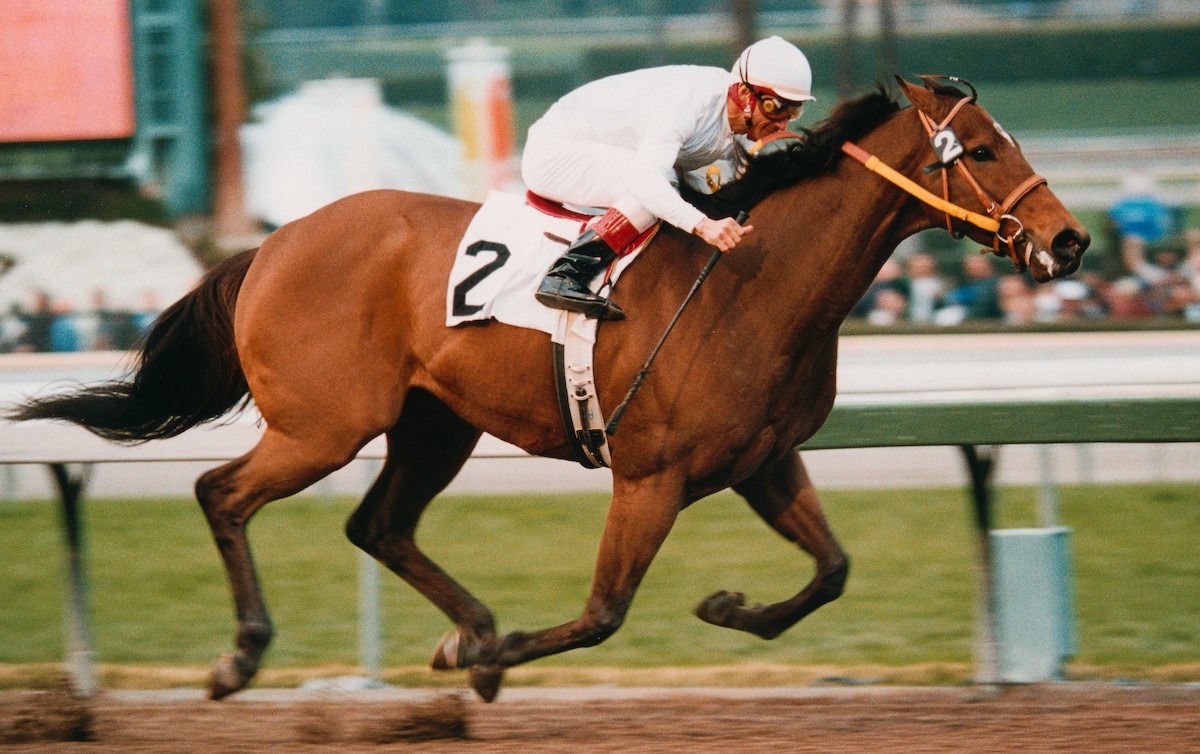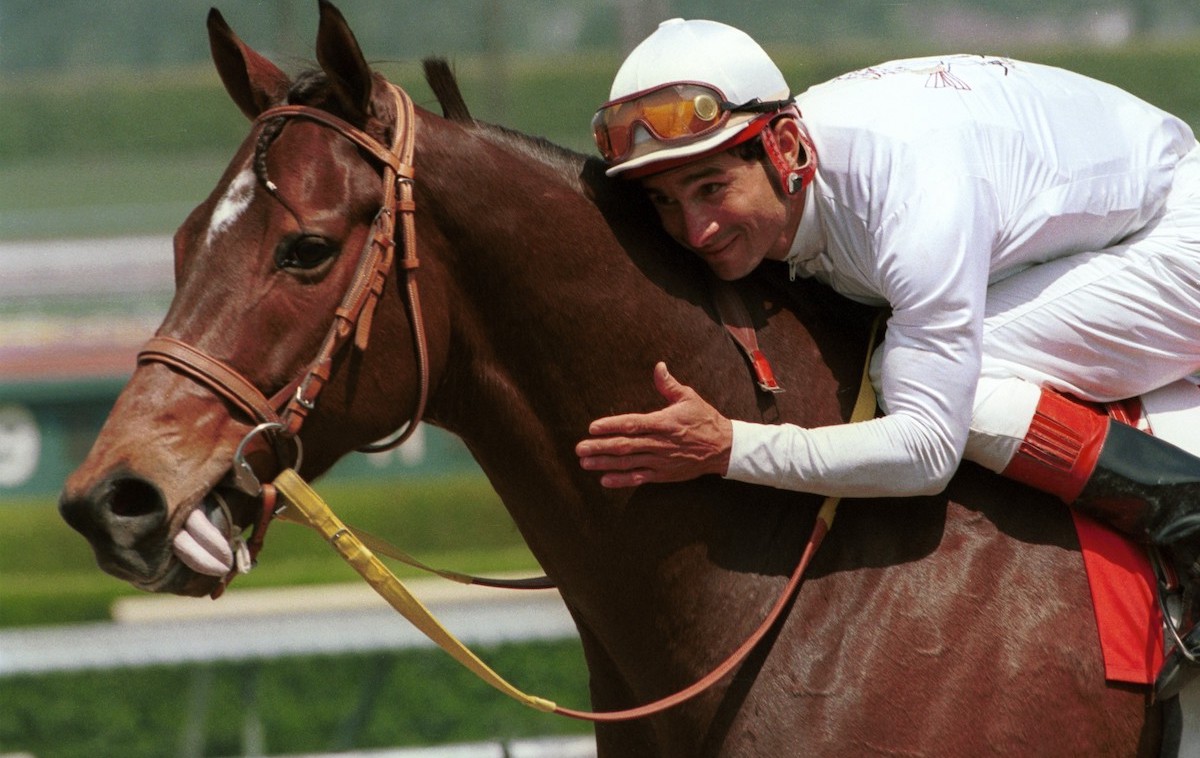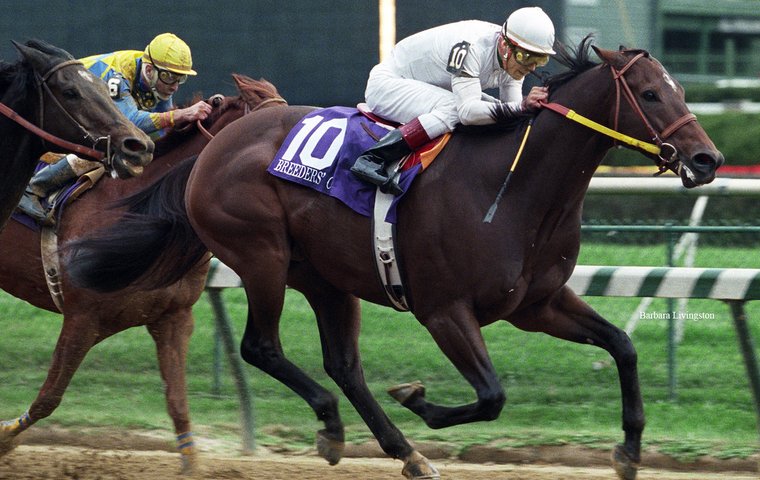
America’s top turf writer recalls a hugely popular sprinter who ran in five consecutive Breeders’ Cups, winning in 2000 at the climax of an amazing championship season
Behold a horse who was the closest thing to a natural resource. Reliable, renewable, warm and comforting to the touch. For 15 years, six months and six days he lived and breathed at a steady hum, ready when called upon, willing as the wind.
Those of us lucky enough to have worked and worshipped at the doorstep of Kona Gold enjoy a special bond. We were there when he unleashed a maiden victory by 15 lengths in July 1998, on the opening weekend of the Del Mar meet, and tingled with the possibilities of what might come.
We could watch his trainer and part-owner Bruce Headley hustle Kona Gold to the racetrack at a full trot on early mornings at Santa Anita while everyone got out of their way.
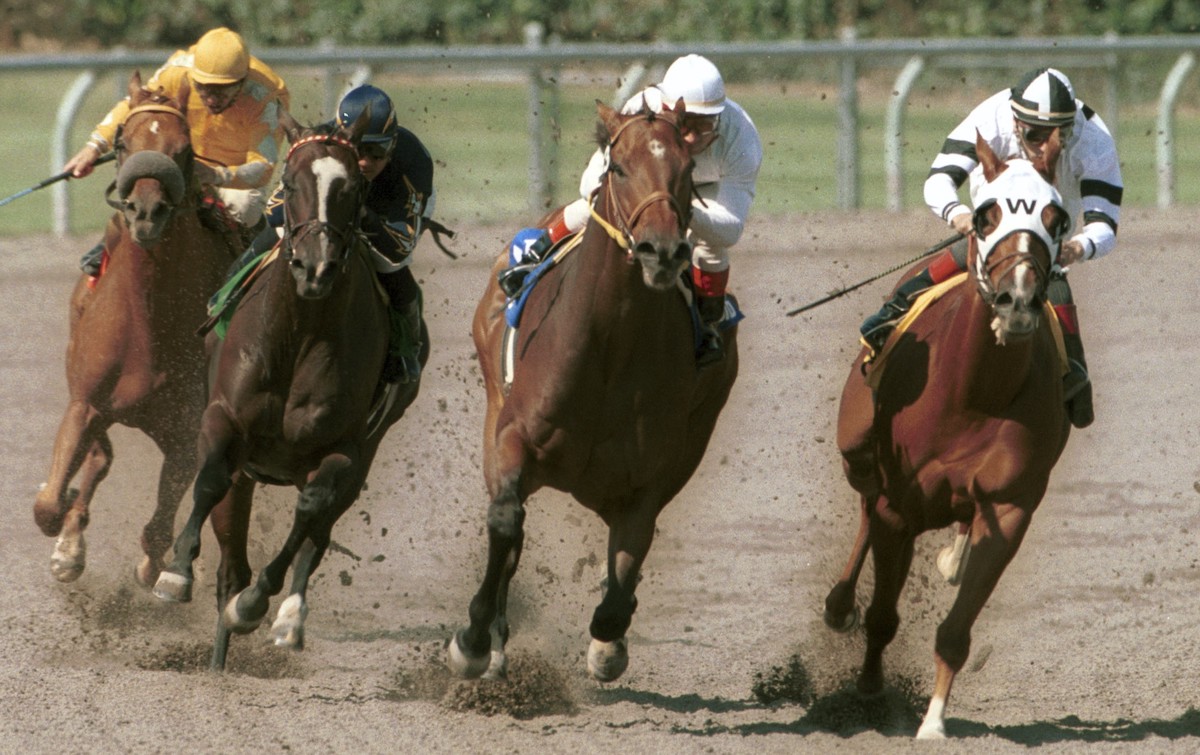
Kona Gold (center) is on his way to victory in the 2000 Ancient Title, setting the stage for the Breeders' Cup. Photo: Benoit
And any time the spirit moved, we could step through the looking glass into the wonderland of the Headley barn for a visit with Kona Gold, who played his part as a throwback Thoroughbred in a land time forgot.Bruce Headley trained like Hemingway wrote. For the writer, no single word was more or less important than any other. For the trainer, no single moment, whether under tack or in a stall, meant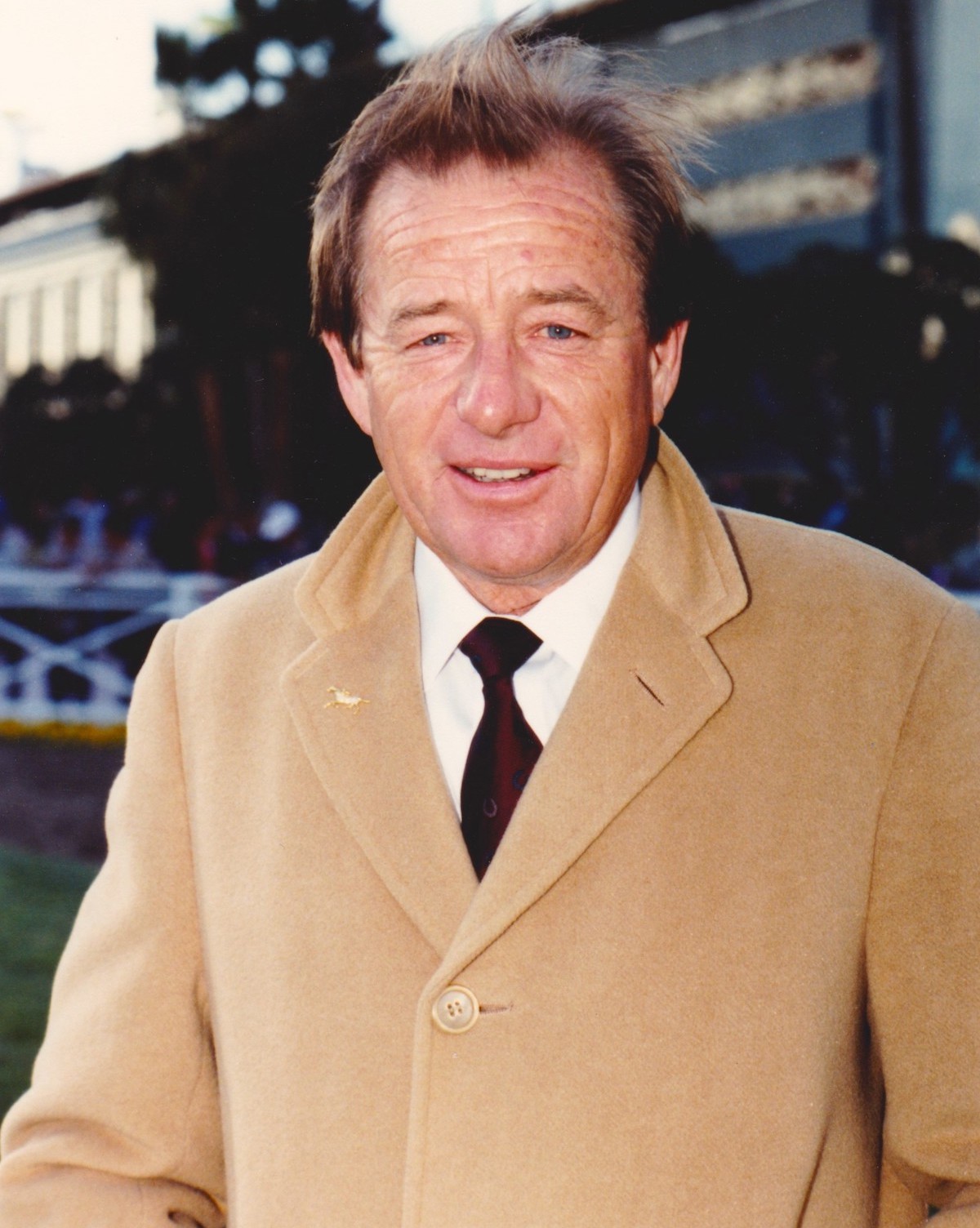 more or less to the development of the Thoroughbred athlete.
more or less to the development of the Thoroughbred athlete.
In his more than six decades on the track, Headley (right, photo provided by Edward Kip Hannan & Roberta Weiser)applied every practical lesson learned in total immersion with all things racehorse. Those of us on the outside looking in called him eccentric, iconoclastic, a real ‘racetrack character’, and Kona Gold was his masterpiece.
“My dad and Kona were one in the same,” said Karen Headley. “There would not be one without the other.”
Karen Headley was an assistant trainer to her father, along with her brother Gus, and has trained horses in her own name since 2013. She is one of a handful of riders to know what if felt like to throw a leg over Kona Gold.
Riding on air
“The faster you went, the faster you didn’t feel anything,” she said, in a non-sequitur that makes perfect sense. “It was like riding on air.”
Headley recalled the morning she was aboard a workmate while Alex Solis took his usual spot atop Kona Gold. “He made up so much ground so fast, then eyeballed my horse, and my horse just backed up,” she said. “That’s the way he was in a race. He’d stare down his competition, give them shark eyes.
“And he always seemed to know where every horse was, like they said about Wayne Gretzky, playing two or three seconds ahead of everybody else.”
Such inclinations were not an accident of birth. Bruce Headley would shape the behavior of his horses from the moment they entered his world.
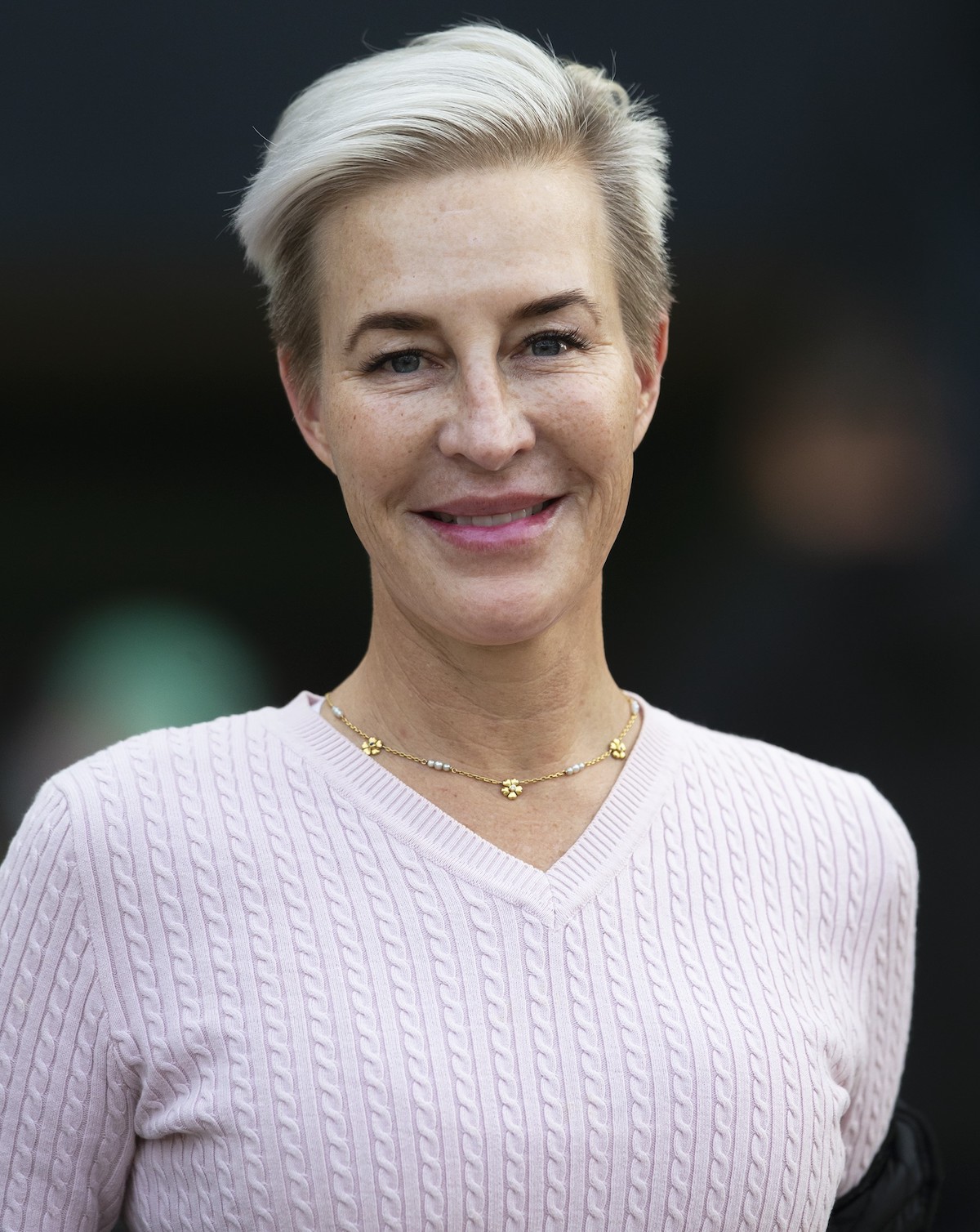 “He could break a horse where you could have almost anybody ride it,” Karen Headley (right, Benoit Photo) said. “He hated watching people kick and jerk at a horse. He didn’t believe in driving them. He’d say, ‘I want this horse to run through fire with me,’ and he’d spend hours giving that horse heart before he even got on him.”
“He could break a horse where you could have almost anybody ride it,” Karen Headley (right, Benoit Photo) said. “He hated watching people kick and jerk at a horse. He didn’t believe in driving them. He’d say, ‘I want this horse to run through fire with me,’ and he’d spend hours giving that horse heart before he even got on him.”
Headley hung out a shingle in 1963 and had been winning major races with good horses like Variety Road, Silveyville, Stylish Winner, and Softshoe Sureshot before Kona Gold came along.
He trained future champion Bertrando as a two-year-old and early three-year-old to win the Del Mar Futurity, Norfolk Stakes, and San Felipe Handicap, and would have won the 1991 Breeders’ Cup Juvenile had it not been for the freakish performance of Arazi.
Foot soldiers of the breed
The trainer’s work with Kona Gold distilled his decades of experience into a career that rivaled some of the great sprinting geldings of racing’s heroic past. Sprinters, remember, are the foot soldiers of the breed. Glory is rarely theirs. It’s over the top and tough luck if you miss a step. Just about every well-hinged Thoroughbred can win sprinting, but to do it well against the best, time and again, year after year – that is an order filled by only a precious few.
The lineage traces to an almost mythical figure of the early 20th century named Roseben, a foal of 1901. Of his 111 races between the spring of 1903 and summer of 1909, only eight were run at more than seven-eighths of a mile. He won 52 times, with another 25 seconds and 12 thirds.
In one stretch of 37 sprints at ages four and five, Roseben 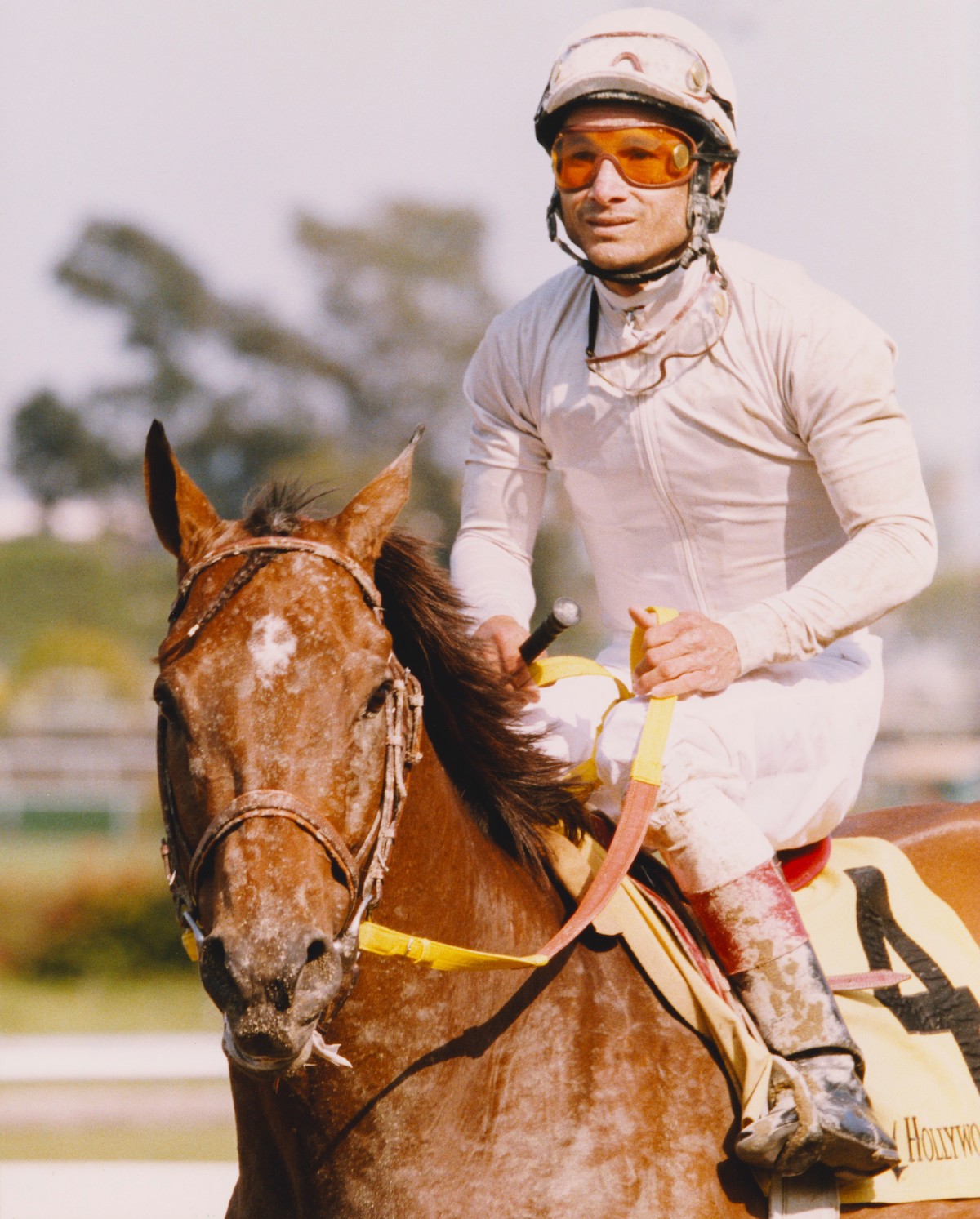
Alex Solis and Kona Gold were a team through 28 races. Photo: Benoit
won 25 and was never worst than third. Track handicappers tried to beat him with weights of 140 pounds or more in 28 races, but at a dizzying height of nearly 18 hands, more often than not he would carry the load with style. Little wonder that Roseben’s nickname was ‘The Big Train’.In 1955, the 15th running of the Roseben Handicap at Belmont Park was won by White Skies under 135 pounds. This was an appropriate outcome, especially based on the judgment of turf writing doyen Joe Estes, who called the chestnut gelding: “The best sprinting specialist since the days of Roseben.”
By the end of his career, under steadily climbing weights, White Skies had taken down such important stakes of the era as the Interborough, Sport Page, Paumonok, Toboggan, and Carter Handicaps, and finished second in the Oceanport at Monmouth Park while giving 30 pounds to the winner.
White Skies raced for the last time in April 1955. Two weeks later, Decathlon commenced a career that ranged up and down the East Coast through 42 starts over a dozen different tracks.
His sire, Olympia, once beat a Quarter Horse in a match race, and the son did not fall far from the tree. Decathlon was acclaimed champion US sprinter in 1956, when he won 10 of 17 starts, and again in 1957, when he was beaten only once and carried 130 or more in each of half a dozen handicaps.
In a business that retires colts from racing before the age of five, the presence of institutions like Roseben, White Skies, Decathlon, and Kona Gold is reassuring. They give fans and media a continuity akin to the great National Hunt horses of Ireland and Great Britain. They are here today … and tomorrow, and tomorrow, and tomorrow.
At a first, frivolous glance, it could be argued that Kona Gold squandered a Classic pedigree that might as well have been chiseled in stone and brought down from a mountaintop with a Kentucky Derby attached.
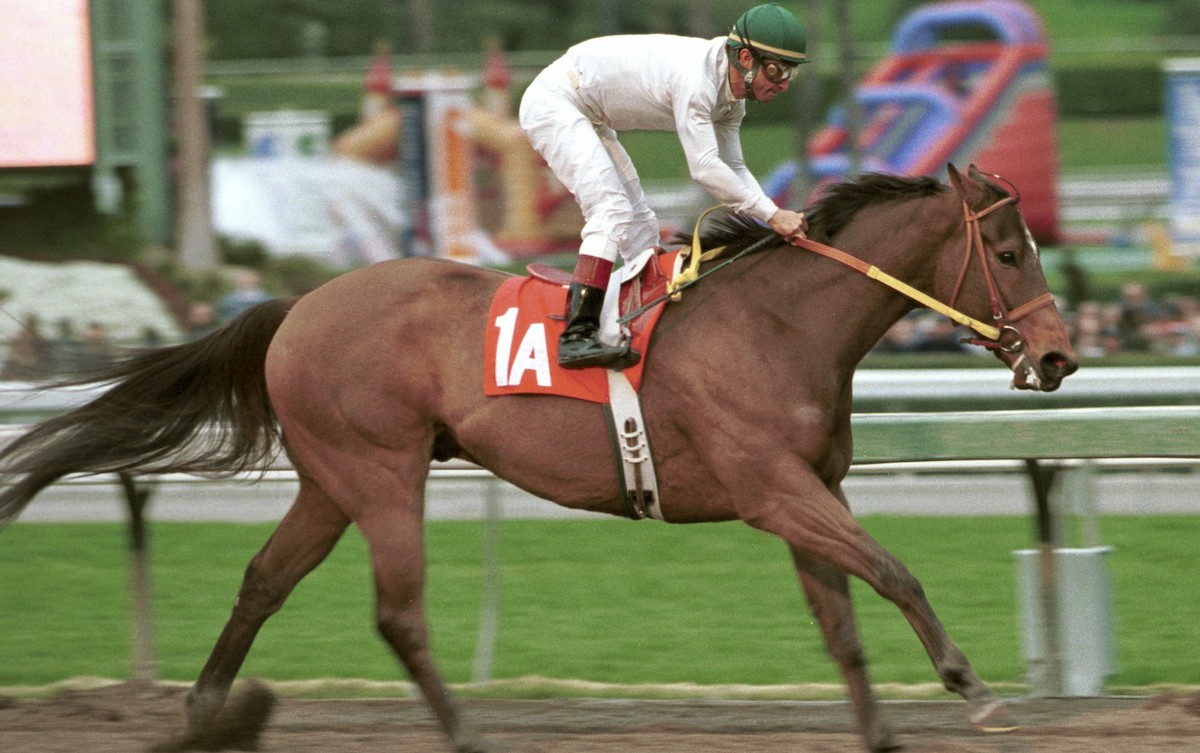
The seven furlongs of the 2001 San Carlos were no problem for a horse bred like Kona Gold. Photo: Benoit
Beyond his sire, the 1987 Travers winner Java Gold, the six stallions in his second and third removes included Key To The Mint, Slew o’ Gold, Graustark, Nijinsky, Seattle Slew, and Majestic Light. In other words, the winners of three Jockey Club Gold Cups, the Man o’War Stakes, Triple Crowns in the US and UK, and the son of a dual winner of the Prix de l’Arc de Triomphe.
Kona Gold was bred by Carlos Lopez in Kentucky and born on March 19, 1994. He was the third foal for Double Sunrise, a daughter of Slew o’ Gold who failed to break her maiden in three starts but at least had some sterling family connections.
How High The Moon, the dam of Double Sunrise, was a half-sister to the 1980 English 1,000 Guineas winner Quick As Lightning, while their granddam Grey Flight was the taproot matriarch for a family that included Bold Lad, Successor, Intrepid Hero, and What A Pleasure.
The Java Gold colt went to market at the marathon Keeneland September sale of 1995. Wearing hip number 2945, he sold for $35,000 near the end of day eight of the ten-day auction.
“I think we bought about six horses at that sale,” said Andrew Molasky, who was partners with his father Irwin Molasky and Headley. “I think they all ended up doing pretty well, though there was nothing in particular about Kona at the time. Bruce always would be looking for the potential athlete in the horse.”
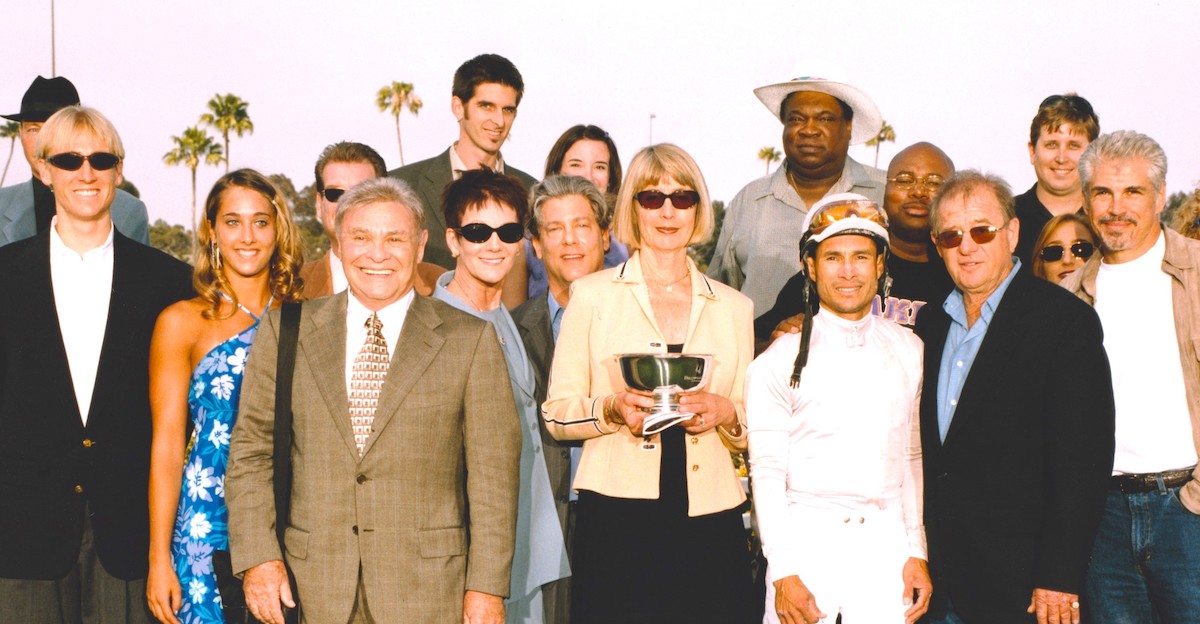
The Kona Gold clan in victory: Irwin Molasky (brown suit), Bruce Headley (next to Alex Solis), Aase Headley (the trainer's wife, holding the cup), behind her Andrew Molasky, and Gus Headley (far left). Photo: Benoit
Irwin Molasky, who died in 2020 at 93, was among the mid-20th century Las Vegas pioneers as a developer of hotels, casinos, hospitals and government buildings. Molasky was also co-founder of Lorimar Productions, an entertainment company responsible for such hit TV shows as The Waltons, Dallas, and Eight Is Enough.Childhood dream
While working for Lorimar in his 20s, Andrew Molasky was encouraged to fulfill a childhood dream and buy into a racehorse.
“I was crazy about racing from a young age,” Molasky said. “My favorite horse was Exterminator, which is why I took his nickname ‘Old Bones’ as my stable name.” Exterminator, winner of the 1918 Kentucky Derby, went on to win 50 of 100 starts and a place in racing’s most treasured lore.
In early 1997, Headley let the Molaskys know that the Java Gold colt – by then named Kona Gold with a wink toward a certain agricultural crop native to Hawaii – was getting close to a race. Then came word from their trainer that their horse had come up with heat in a knee.
“He was ready to run when we found it,” Headley said later. “And ready to win, too. A lot of guys would have injected the knee, won the race, and gone on with him, and then who knows how long he’d have lasted? But we stopped on him, took out the flake, and gave him the time he needed.”
Finally coming out on Memorial Day of 1998, the now gelded Kona Gold won three of his first four starts – including that 15-length maiden score – at which point he was plunged head first into the upper echelon of the sprinting world.
In only his sixth start, Kona Gold finished third in the 1998 Breeders’ Cup Sprint at Churchill Downs, beaten two lengths by victorious Reraise and just a head by second-placed Grand Slam.
Kona Gold was further tested under fire in early 1999 when he exchanged blows in three thunderous meetings with massive Big Jag, who would go on to win the 2000 Golden Shaheen in Dubai. In the second half of '99, Kona Gold finished second in the Breeders’ Cup Sprint by a shrinking half-length to Artax.
Kona Gold kicks off his championship season by winning the Palos Verdes at Santa Anita. Photo: Benoit
Headley was disappointed, but hardly discouraged. As the new century dawned, the trainer had on his hands a freshly turned six-year-old in the prime of Thoroughbred life, with just 11 starts worth of mileage and proven ability at the top of the game.Unstoppable
Their season began on Jan. 29. 2000, when Kona Gold settled matters once and for all by beating Big Jag at level weights. In the subsequent San Carlos Handicap, Kona Gold was upstaged by the senior member of the Headley barn, eight-year-old Son Of A Pistol, who beat his younger stablemate by a nose. In effect, the torch was passed, however, and for the rest of the year Kona Gold was unstoppable.
• April 8, 2000, he wins the 6½-furlong Potrero Grande Handicap at Santa Anita by 4½ lengths.
• July 29, 2000, he wins the six-furlong Bing Crosby Handicap at Del Mar by three-quarters of a length.
• Oct. 14, 2000, he wins the Ancient Title Handicap at Santa Anita by three lengths.
• Nov. 4, 2000, he goes postward in the Breeders’ Cup Sprint at Churchill Downs as the 17-10 favorite in the field of 14.
Mutual affection: Kona Gold and Alex Solis. Photo: Benoit
“He was bred to run a mile and a half,” said Hall of Famer Alex Solis, who rode Kona Gold in 28 of 30 starts. “But he wasn’t built for that. He was built more for speed, but he still had the heart that you could ride him hard at six furlongs and he would keep going. He was like a bicycle. The faster you pedaled, the faster he would run.“If you watch the 1999 Breeders’ Cup Sprint, you see me riding him hard the whole way and he just missed,” Solis continued. “At Churchill Downs in 2000, he was up there close on a 20-and-change first quarter and a 43 half. So he was going really fast. At the top of the stretch he kicked on and kept going, then in the last 150 yards I could hear Kent Desormeaux yelling on Honest Lady. He was coming fast, but by then I thought we’d get there anyway.”
They did, by a half-length, in a Breeders’ Cup Sprint record of 1:07.77. Within days, Headley and Molasky were sporting black caps with a ‘1:0777’ logo in gold, while Solis changed his license plates to read ‘KONA 107’.
Eclipse Award voters followed suit, in their own way, by casting 219 of 220 votes for Kona Gold as champion sprinter of 2000.
After a season of such near-perfection, Headley was not about to flip the script. Kona Gold, a young seven, went boom-boom-boom in his first three starts of 2001 in the San Carlos, Potrero Grande, and Bing Crosby, in which he beat Caller One, winner earlier that year of the Golden Shaheen.
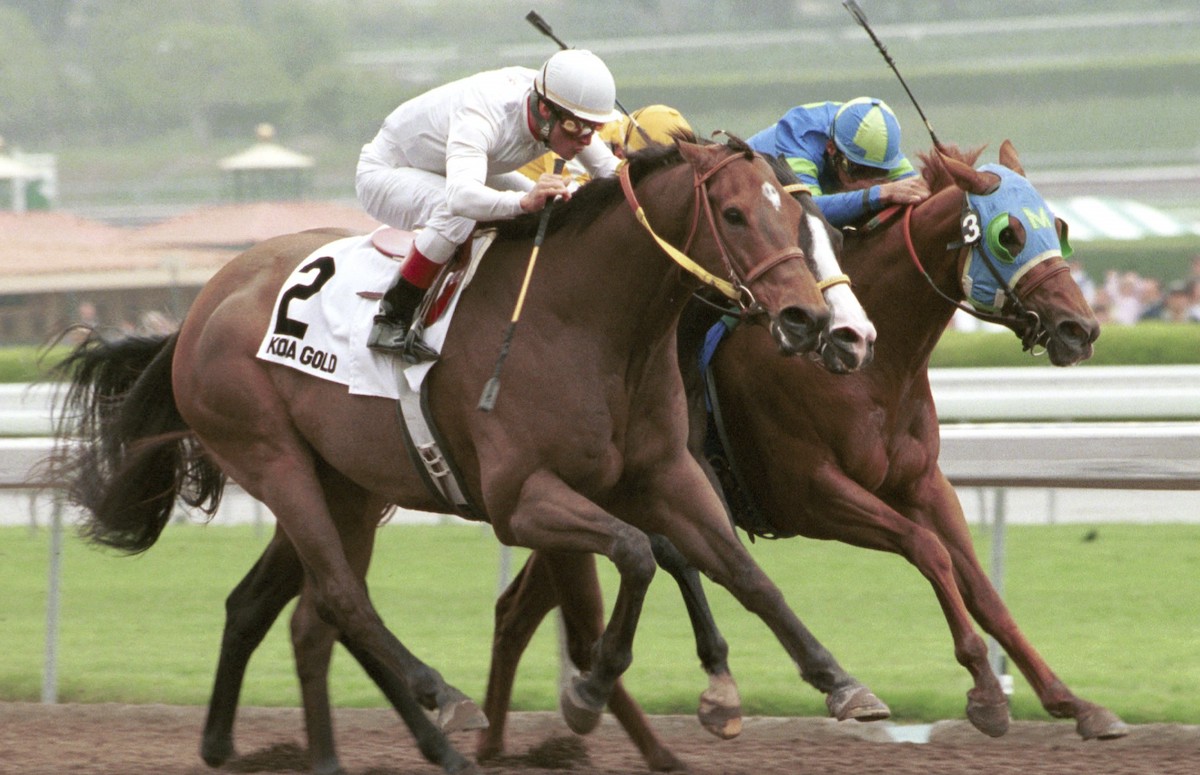
A nail-biter in the 2001 Potrero Grande marked Kona Gold's sixth win in a row. Photo: Benoit
In the subsequent Ancient Title, under a career high of 127 pounds, Kona Gold was caught at the end by Swept Overboard (116 pounds), a colt on the rise who went on to take the 2002 Metropolitan Handicap.Kona Gold’s defense of his Breeders’ Cup Sprint crown took place at Belmont Park in the wake of the terrorist attacks on New York City in 2001. The Long Island setting made for an emotional afternoon, but for Kona Gold and Solis there was nothing but frustration.
“That was the only track he couldn’t handle,” Solis said, reflecting on their lackluster seventh, beaten four lengths by Squirtle Squirt. “Belmont is like that for some horses, with all that sand hitting them in the face for the first time. It’s a very different experience, nothing you can really prepare for.”
Headley took his champion home to California and found nothing worse than hurt feelings. Soon, he was Maryland bound for late season riches in the Frank J. De Francis Memorial Dash at Laurel. This time he handled the track but still was beaten four lengths, while finishing fourth. In his first 21 starts, Kona Gold had been out of the top three only once. Now it had happened twice in a row.
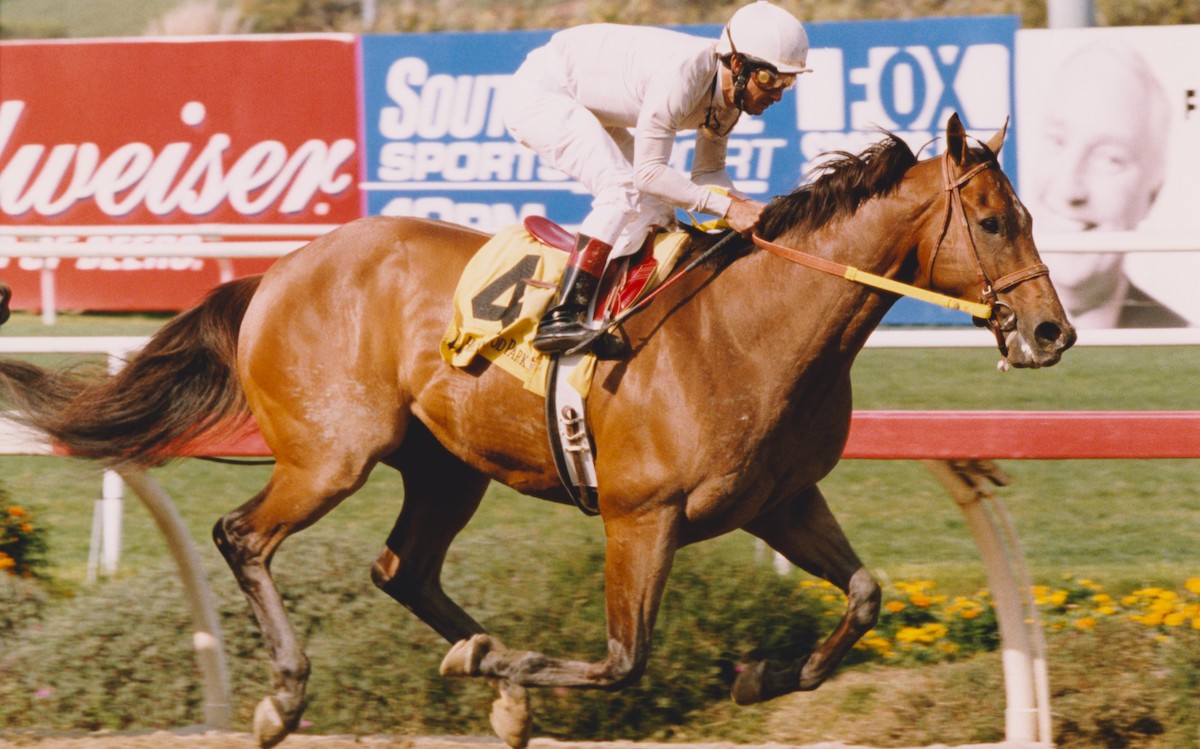
Eight years old was not enough to stop Kona Gold from winning the 2002 Los Angeles Handicap. Photo: Benoit
“He just didn't fire,” Headley concluded. “I think he's tired. Old age may be catching up to him.”Kona Gold received a nice, long rest, part of it spent in a paddock at the home of Karen Headley, where her racetrack pals would occasional gather to unwind.
Cocktails and bareback
“We’d have cocktails and get on Kona bareback,” Headley said. “It’s probably a good thing we didn’t have camera phones back then.”
Thus refreshed, Kona Gold re-emerged to win the Los Angeles Handicap at Hollywood Park in June 2002. It was shades of the old Kona, carrying topweight and stopping the clock in 1:08 and change.
Later that season he ran for the fifth time in the Breeders’ Cup Sprint, tackling yet another generation of fast young guns, and was not embarrassed in finishing fourth to Orientate.
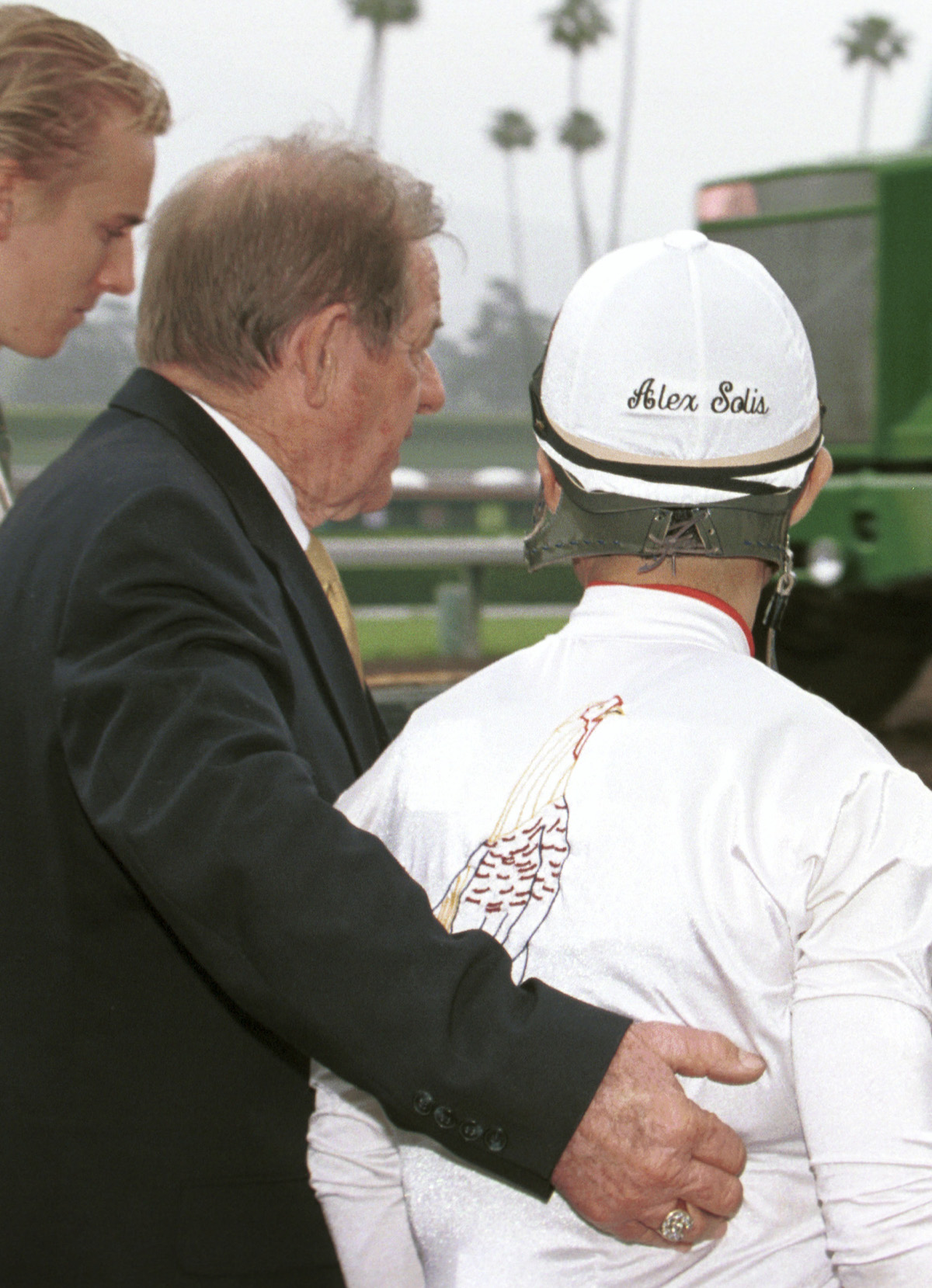
Headley and Solis were keepers of the flame. Photo: Benoit
On New Year’s Day 2003, when he officially turned eight, Kona Gold marked the occasion by winning the El Conejo Handicap at Santa Anita Park. It was his last hurrah. The spirit was still willing, but the legs were giving way to Father Time.After a fifth-place finish that summer in the Bing Crosby at Del Mar – where he had never lost a race – Kona Gold was retired. His record read 30 starts, 14 wins, seven seconds and two thirds, for earnings of $2,261,074.
“Hey, Juan, what about that? Life without Kona Gold,” Headley said the day after the retirement was announced. Juan Soto had groomed Kona Gold since he came to the track at age two. At 6-foot-3, he was always eye-to-eye with his horse.
“Sad,” Soto replied. “Very sad.”
After some quiet time to unwind, Kona Gold returned to the track as the Headley stable pony, striding forth daily to accompany such subsequent stakes runners as Chosen Royalty, Surf Cat, Arson Squad, Magnificience, Street Boss, and Silver Swallow.
In October 2007, John Henry died at the age of 32 at the Kentucky Horse Park near Lexington, leaving an impossible hole to fill in the cast of characters in residence at the Hall of Champions. But a personality like Kona Gold would go a long way toward filling that void, which is why Horse Park president John Nicholson reached out to Headley and the Molaskys with an offer to provide their horse with a forever home.
“I wanted to take him to my backyard, but I was thrilled the Horse Park wanted him,” Andrew Molasky said.
Kona Gold’s new caretakers were smitten from the start. “He was so kind,” Nicholson said. “He seemed to be a horse with a great deal of empathy for people. You could tell by the way he was attracted by all the tourists and visitors as much as they were attracted to him.
“And he did have a great following,” Nicholson added. “People came to the Horse Park just to see Kona Gold, and there are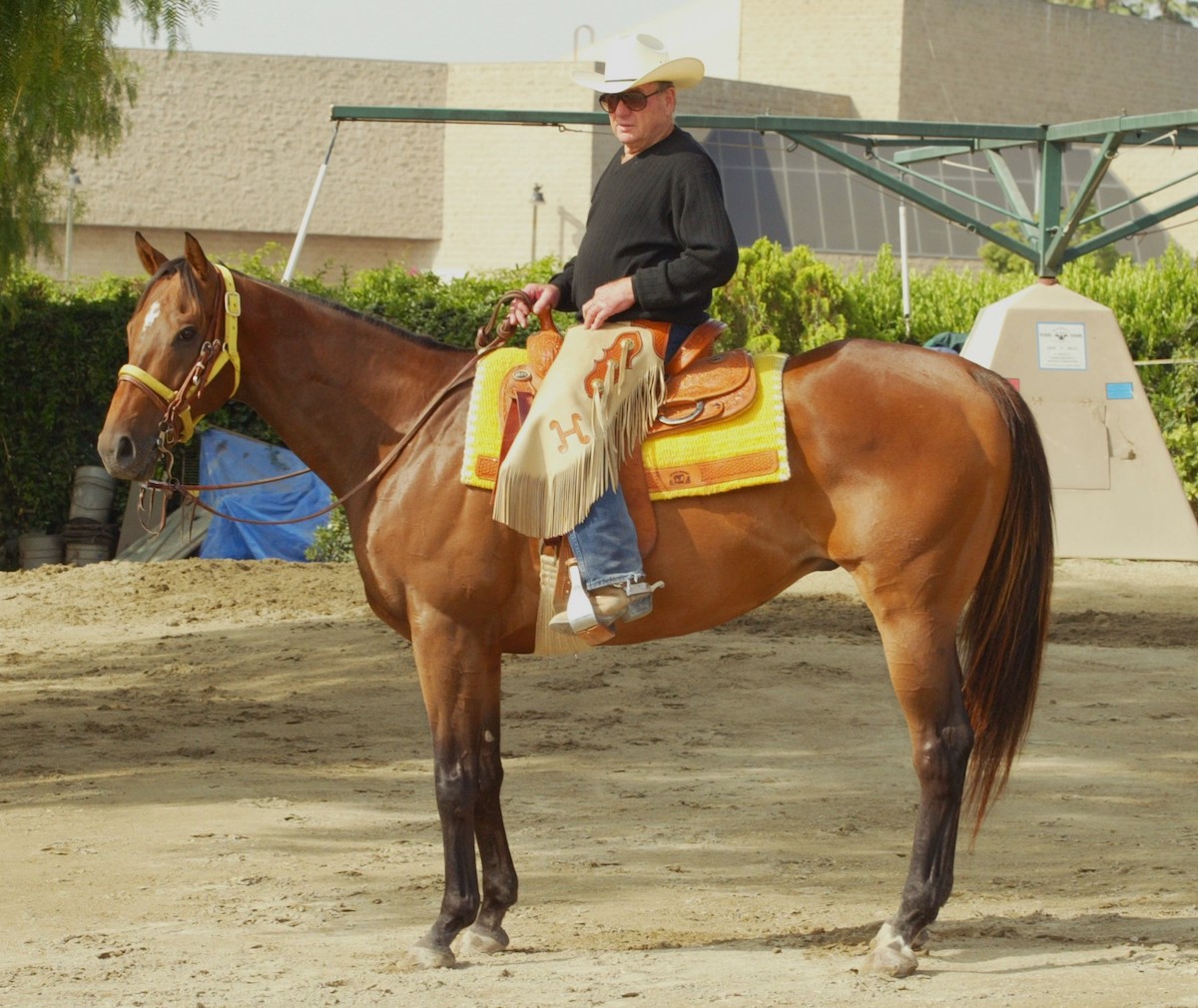
Decked out in Western regalia, Kona Gold was Bruce Headley's millionaire pony. Photo: Benoit
only a few horses who have that kind of magic.”Nicholson, who retired from his position at the Horse Park in 2014, is now president of Old Friends Equine, working alongside founder Michael Blowen.
“I was there the day Kona Gold arrived at the Horse Park,” Nicholson went on. “I actually helped take him off the trailer, which is further evidence of how wonderful he was. The staff wouldn’t let me do that with too many horses.”
On the morning of Sept. 25, 2009, Hall of Champions staff discovered Kona Gold lame in the pasture he shared with two-time Breeders’ Cup Mile winner Da Hoss. He had sustained a spiral fracture of the forearm of his left leg.
“The best guess was that it was from some sort of stumble,” Nicholson said. “There are some phone calls you get where you don’t recall the words, but you remember the terrible feeling you had in your gut.
“Even though he was going to be transported to the Hagyard hospital, and everything that could be done for him would be done, we’d all been around long enough to know when you don’t except the news to be good.”
Never to be forgotten
The damage was irreparable. After hospital staff consulted with Headley, Kona Gold was euthanized. His remains are interred beneath a marker hard by the Hall of Champions walkway, alongside the likes of three-time Horse of the Year Forego and dual Classic winner Bold Forbes.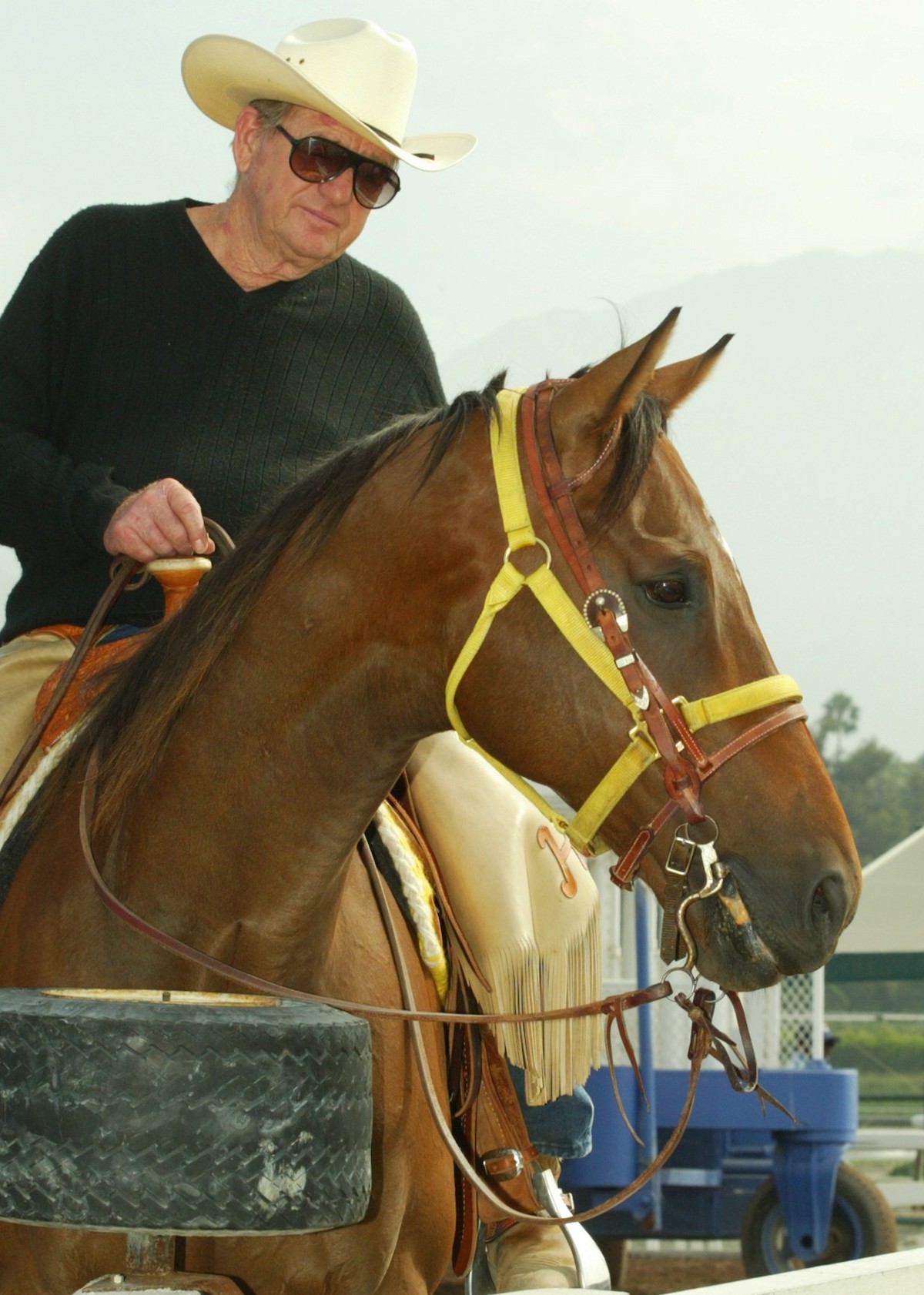
The champ strikes a pose as Headley's stable pony. Photo: Benoit
“The Horse Park was kind enough to send me the bridle he wore,” Molasky said. “We’ve also got the nameplate that was above his saddling stall at Churchill Downs for the Breeders’ Cup. We call our house the Kona Gold Ranch, and the walls of the family room are lined with all the pictures of his wins. If I have anything to do with it, he’ll never be forgotten.”
Even with the death in 2021 of Bruce Headley, at 86, there are plenty of Kona Gold memories that linger.
His dozen years on the racetracks of Southern California provided grist for a volume of apocryphal moments – like the morning at Del Mar during the pony part of his career when he slipped out of his bridle and made a beeline to the main track gap wearing nothing but Bruce Headley’s handsome Western saddle and (probably) a mischievous grin.
One of the outriders who took up the chase was Blake Heap, also a respected trainer, who had a reputation for being able to catch anything with four feet and a tail. Some old runaway pony should not have been a problem.
“I ran up on the stands to watch all these people try to catch him,” Karen Headley recalled with a laugh.
“Kona was on his way to running two miles, just like he trained,” she went on. “But he’d slow up just enough for Blake to get close, then he’d take off, and the race was on. The second time around, when he’s still messing with the outriders, I hear Blake yell, ‘That’s goddamn Kona Gold!’”
Damn right.
• Read all Jay Hovdey's features in his Favorite Racehorses series
Smarty Jones: ‘You know, this is America’s horse!’
Golden Pheasant: ‘Entering the Japan Cup walking ring was like walking into a football stadium’
View the latest TRC Global Rankings for horses / jockeys / trainers / sires



